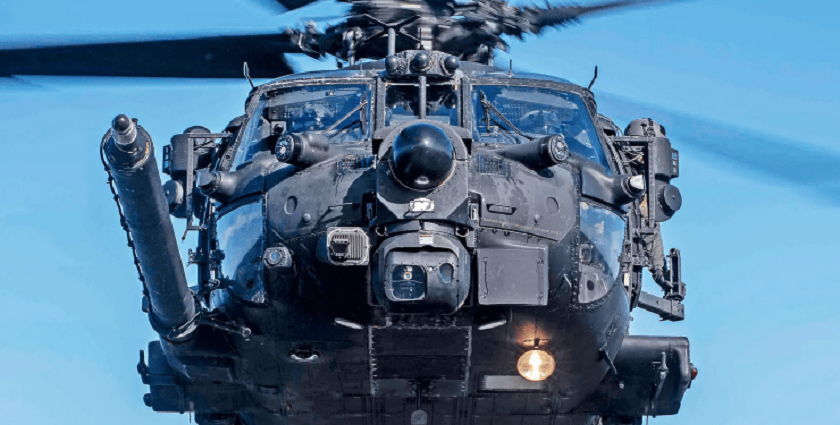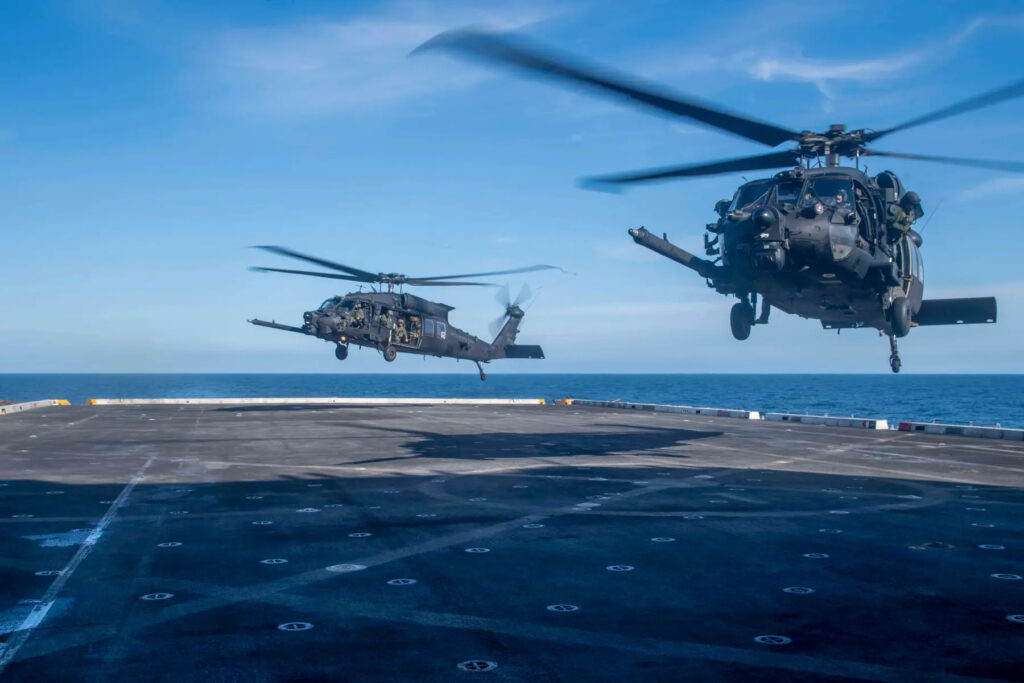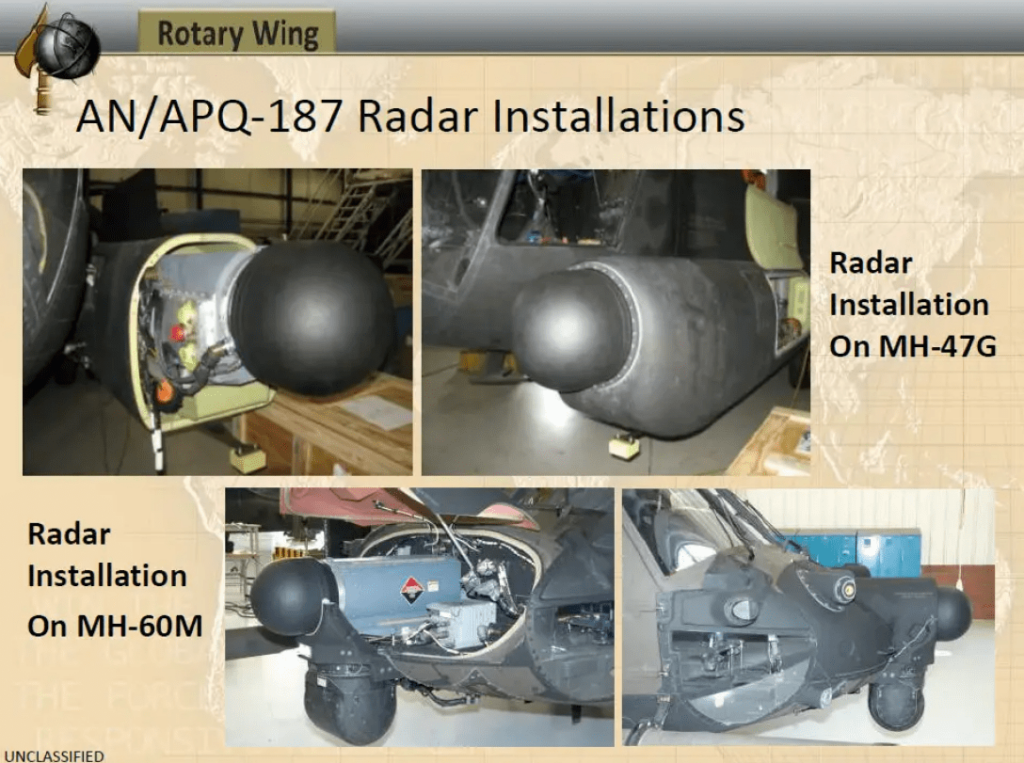
At the forefront of technology. U.S. Special Operations Forces demonstrate state-of-the-art Black Hawk helicopter
During the “Polar Dagger” exercise, the US Special Operations Forces demonstrated a helicopter equipped with a large number of radars, systems and complexes. These technological innovations are designed to simplify and improve the work of the crew, ensuring greater flight safety.
In early September, a photo was published somewhere in the Bering Sea between Alaska and Russia. The helicopters of the 160th Aviation Regiment of the USAF were flying missions on the amphibious ship USS John P. Murtha. The military was practicing a training exercise called “Polar Dagger.” The main objectives were to show how special operations forces can help protect critical facilities in the Arctic and sub-Arctic regions.

The helicopters were filled with a large number of technological devices. For example, the AN/APQ-187 Silent Khight and AN/ZSQ02 radar.

Silent Knight allows you to fly safely at ultra-low altitudes in bad weather or at night. The AN/ZSQ-2 has electro-optical and infrared full-motion video cameras and a rangefinder. To the left of this radar is the DVEPS sensor system, which is a system for piloting in a degraded visual environment. Using a combination of cameras and LIDAR, the crew can navigate in dust, sand, snow, and fog.

In addition, the helicopter has a number of defense systems along the top of the fuselage: radars and laser surveillance sensors, infrared missiles, radars and surveillance equipment, and electronic warfare systems. Such systems help to warn of an approaching missile or a laser beam.
The MH-60Ms from the 160th Air Regiment were also equipped with the Army’s Common Infrared Countermeasures System, which uses laser beams to mislead enemy infrared targeting systems.

